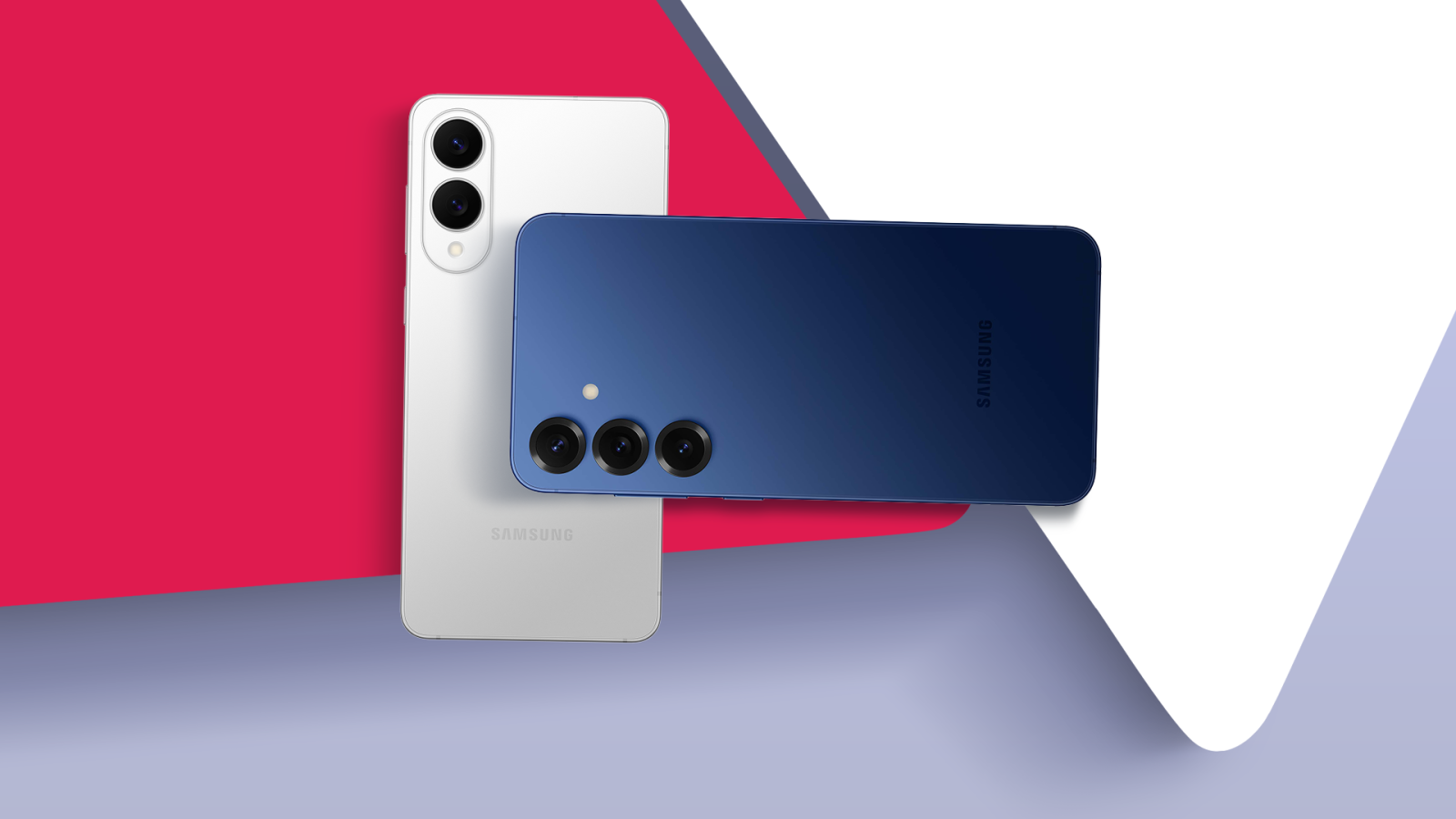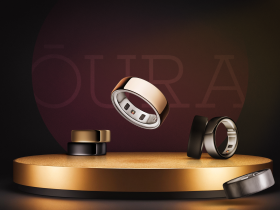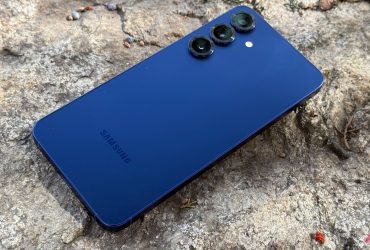Why I’m Skipping The Galaxy S25 Edge For The More Practical S25+

Contents
Samsung hopes to bring slim phones back into fashion with the Samsung Galaxy S25 Edge. At 5.8mm thick, this is Samsung’s slimmest phone, and it still packs powerful internals. While the Galaxy S25 Edge is an impressive phone, I prefer the Galaxy S25 Plus.
The Edge makes too many compromises to achieve its thin design. These compromises are impractical for everyday use. While it’s among the best Samsung phones, it’s not for me.

Related
Snapdragon 8 Elite in a slim body means thermal issues

I used several Snapdragon 8 Elite-powered phones this year, including the Galaxy S25 Ultra, S25+, and OnePlus 13. While Qualcomm’s latest and greatest mobile SoC delivers outstanding performance, it tends to get hot under heavy use.
Things are worse if you live in a country with scorching summers. When temperatures reach 110F, these phones heat up within a few minutes of intense use when used outside an air-conditioned room.
Samsung claims the Galaxy S25 Ultra uses a better cooling system than its predecessor, but it cannot keep up with the fiery Snapdragon 8 Elite, ramping down its clock speed due to thermal issues.
The Galaxy S25 Edge sports the same chip in a super-slim 5.8mm chassis. If anything, the Edge throttles the Snapdragon chip more quickly due to limited thermal headroom. The Galaxy S25+ fares better, as its thicker body provides more room for heat dissipation.
There’s no way Samsung can beat physics. A chip as powerful as the Snapdragon 8 Elite in a phone with such a slim body will overheat. To avoid that, the company must reduce its clock speed.
I have had instances of the Galaxy S25 Ultra and S25+ throttling when used outside in the harsh summer heat. The Galaxy S25 Edge will likely fare even worse in such scenarios.
In most cases, given how powerful the Snapdragon chip is, the slowdown in performance isn’t noticeable. However, a phone that frequently gets hot to the touch quickly becomes annoying to use in everyday life.
Galaxy S25 Edge loses its edge the moment you use a case

The main selling point of the Galaxy S25 Edge is its thin and lightweight design. When you put on a case, you negate its biggest highlight. Some people like using their phones without a case, but I’m not one of them.
I tend to drop my phone often, so a case is necessary. Try using a phone without a case with dogs and toddlers in your home, and you’ll realize why cases are important.
Even if I take Samsung Care+ insurance, I still have to use a case with the Galaxy S25 Edge as it lacks native Qi2 MagSafe support. Magnetic wireless charging is too big of a convenience for me to give up.
Even with a case, the Galaxy S25 Edge isn’t as thick as the Galaxy S25+. It is slimmer than its 7.3mm-thick sibling. Putting a case on the S25+ makes it thicker. If I have to use a phone with a case, I prefer one with a longer battery life, better thermal performance, and a dedicated telephoto camera.
I am not a fan of the Galaxy S25+’s dedicated 10MP 3x telephoto shooter. Other phones like the Xiaomi 15 Ultra or S25 Ultra sport a bigger 3x shooter or offer a longer 5x zoom range. Still, a dedicated telephoto lens is better than not having one at all. A compromise that the Galaxy S25 Edge makes in favor of its thin design.
While its primary camera might sport a higher 200MP resolution sensor, it takes images on par with the Galaxy S25+’s 50MP main camera.
Thinness comes at the cost of battery life

The best Android phones come with 5,000mAh+ batteries. The Galaxy S25+ is no exception, packing a 4,900mAh cell and delivering all-day battery life. It supports 45W wired fast charging, ensuring you can juice up an empty battery to 75% in 30 minutes.
The Galaxy S25 Edge ships with a paltry 3,900mAh battery. Even if Samsung heavily optimized One UI 7 to lower power consumption, there’s no way the Edge will match its Plus sibling in battery life. A 1,000mAh gap in battery capacity is too large to bridge through software optimizations. Also, the Snapdragon 8 Elite chip inside the phone can pull a lot of power under load.
As a power user, I will take the Galaxy S25+’s longer battery life and fast charging speed any day. They are extremely useful in daily use, especially when traveling. Most premium Android phones launched this year excel in the battery life department, packing enough juice to last a day.
Even if the Galaxy S25 Edge delivers respectable battery life for my use case, it won’t age well. With future updates and as the battery capacity reduces, the phone’s battery will drop, and it will struggle to make it through a workday.
In today’s world, where we depend on our phones for everything — from payments to booking cabs — it’s hard to justify using a device with subpar or average battery life. The slow 25W charging speeds don’t help either.
Galaxy S25+ provides better value for money

Despite its compromises, the Galaxy S25 Edge carries a $100 higher price tag than the S25+, with prices starting at $1,100 in the US. The latter is the middle child in Samsung’s flagship smartphone lineup, positioned between the base $800 Galaxy S25 and the $1,300 S25 Ultra.
Priced at $1,000 before taxes and discounts, it offers the most value in the Galaxy S25 family. For that price, you get a phone with Qualcomm’s flagship mobile chip, 12GB RAM, triple cameras, and all-day battery life.
The Galaxy S25 Edge packs similar specs as its Plus sibling, but with some key compromises: inferior battery life, dual rear cameras, and slower charging speed. Yet, Samsung wants $100 more for it because it is thin.
There’s no doubt the Galaxy S25 Edge is an engineering marvel. Since it falls short in areas that matter for everyday use, it’s hard to justify spending an extra $100 over the excellent S25+, which doesn’t have these issues.
If the Galaxy S25 Edge had cost a couple of hundred dollars less than the S25+, it would have been easier to look past some of its shortcomings.
The Galaxy S25 Edge is all about its thinness
The key selling point of the Galaxy S25 Edge is its super-thin design, which is also a problem. Looking past the novelty factor, most users will have little reason to own such a thin phone, especially since it falters in key areas.
As a power user, the Galaxy S25 Edge makes too many compromises for me to justify its steep price. The Galaxy S25+ is a better buy, offering more value for money.
This does not mean the Galaxy S25 Edge does not have a market. My wife loved how the phone felt in her hand, and my dad appreciated its lightweight design. If only the price were easier to justify.

Samsung Galaxy S25 Edge
Samsung’s latest smartphone combines the best elements of the mainline Galaxy S25 trio with an all new slim chassis. But will the smaller battery and reduced sensor count be enough to win over enthusiasts?
What’s your reaction?
Love0
Sad0
Happy0
Sleepy0
Angry0
Dead0
Wink0


![bring-back-unique-smartphones-[video]](https://betadroid.in/wp-content/uploads/2025/05/22489-bring-back-unique-smartphones-video-280x210.jpg)




![this-android-16-update-is-huge-[video]](https://betadroid.in/wp-content/uploads/2025/05/22459-this-android-16-update-is-huge-video-370x250.jpg)



Leave a Reply
View Comments